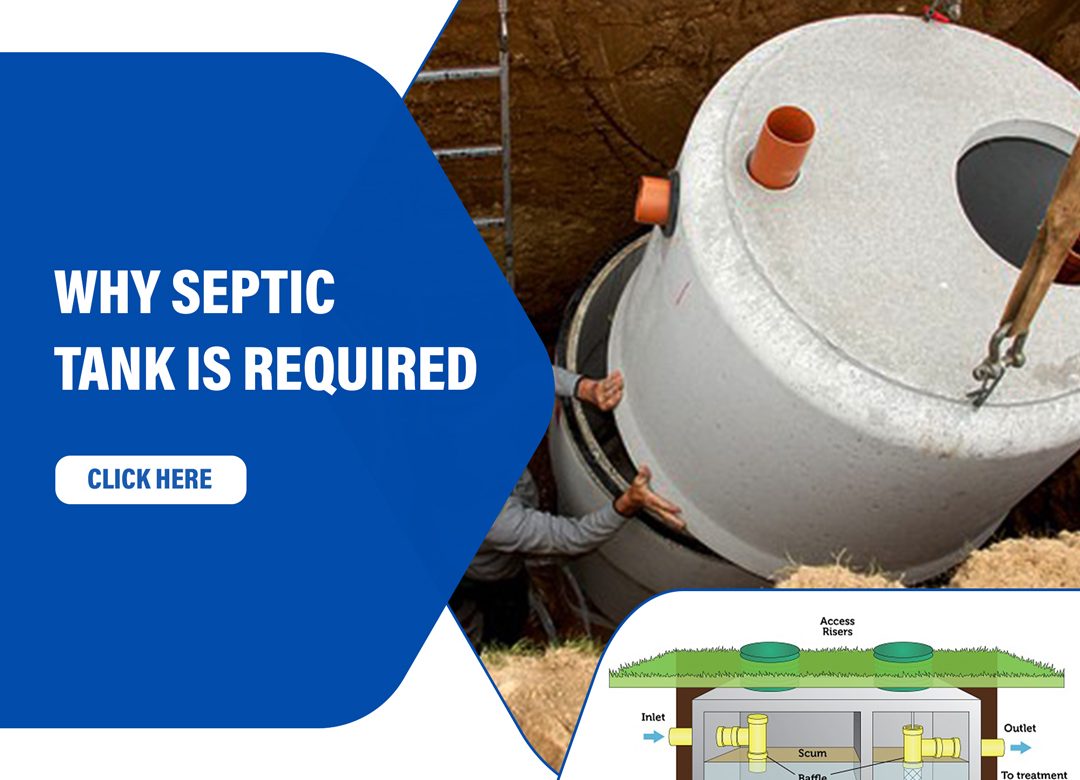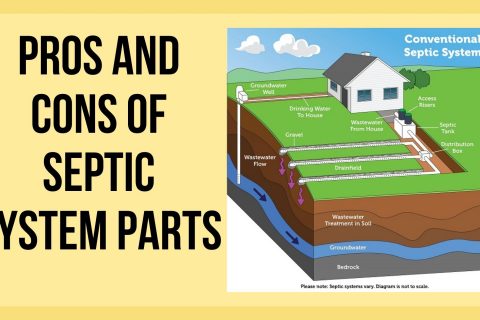Many individuals are unfamiliar with septic tanks. However, for those households who do utilize one, they are critical. This article will explain what a septic tank is and how it works. Septic tanks are useful for disposing of night soil in un-sewered rural and urban regions. If you’ve always lived in a house that has been linked to the city’s sewage system, odds are you’ve never heard of a septic tank, much alone know what one is. A septic tank is the main sedimentation tank with a long detention duration. However, adequate water should be supplied since water is essential for the movement of night soil from the lavatory to the septic tank and the correct operation of the septic tank.
Septic tank, What does it mean?
A septic tank is an underwater sedimentation tank used for wastewater treatment and discharges via biological breakdown. A septic tank system’s design is fairly simple. It is a subsurface waterproof container made of fibreglass, plastic, or concrete.
A septic tank involves completely natural processes to clear wastewater from home plumbing such as kitchen drains, bathrooms etc. Septic tank compartments and a T-shaped outlet keep scum and sludge from departing the tank and invading the drain field area. Septic tank systems are a simple onsite sewage facility (OSSF) that only offers basic treatment. The wastewater is discharged into a municipal drainage pipe if one exists in the area. It should be noted that disinfectants such as bleaching powder, phenyl, and others should not be used in latrine cleaning since disinfectants entering the septic tank damage bacteria development, delaying the biological decomposition process.
Why is Septic Tank Important?
Those properties that do not have appropriate drainage or are not connected to the municipal sewage system are responsible for gathering excreta and wastewater in one large underground tank and are mostly utilised in rural regions. Septic tanks are typically constructed underground 50 metres away from the residence.
They are typically composed of two chambers or compartments and one tank that accepts wastewater via an entrance pipe. Septic tanks are not required for persons in cities or towns since wastewater is carried and dealt with by their sewage system. This will be maintained and managed by a local water business. A septic system allows every house to utilise its water facilities normally. However, certain additional measures must be taken. The septic tank will also need to be maintained regularly.
Homeowners with a septic tank have an added responsibility to ensure that their tank does not pollute the surrounding environment. Two pipes will connect to a septic tank. The exit pipe is the second pipe. It can also refer to the drain field. This pipe transports pre-processed wastewater from the septic tank and distributes it evenly over the land and watercourses.
A septic tank digests organic materials while also separating floatable debris and particles from wastewater. The input pipe transports wastewater from the residence and deposits it in the septic tank. It is maintained here long enough to separate the solid and liquid waste.
Dimensions for a Septic Tank
Septic tanks are designed with a 24-hour detention duration in mind. The flow rate of effluent must be equal to the flow rate of influent. Stoneware or asbestos pipes may be used. RCC hanging scum baffle walls are used in septic tanks. Baffle barriers are built near the intake. It is a feature that may be added near the outlet. A pipe that is mainly elbow or T type and having a diameter of 100mm is submerged to a depth of 250-600mm below the liquid level. The intake baffle wall is L/5 away from the wall, where L is the length of the wall. The baffle wall normally reaches 150mm above the scum level and 400-700mm below it. Because scum is light, it floats at the tank’s water level.
Depending on the size of the tank, the top of the septic tank is covered with an RCC slab with a thickness of 75-100 mm. 500 mm clear diameter circular maintenance holes are supplied for inspection and desludging. The clear dimension of a rectangular aperture is fixed at 600X450 mm. Cast iron or asbestos pipe with a diameter of 50-100 mm and a length of 2 m (min) above ground level is supplied to discharge bad gases and ventilation. The top of the ventilation pipe has a mosquito-proof wire mesh or cowl.
Septic tanks are very useful to dispose of night soil. All that remains is to ensure that enough water is available to allow the night soil to flow from the restroom to the septic tank and for the septic tank to work properly. At this time, biological decomposition occurs due to the action of anaerobic bacteria, which liquefies and splits the night soil, leaving just a small amount of soil. It is referred to as sludge and settles at the bottom of the tank, while clean water, referred to as effluent, flows out of the tank. In case, If there is no municipal drainage infrastructure in the area, the septic tank effluent is generally disposed of through absorption in the soil via a soak hole.
The septic tank is built so that the sewage is held in the tank for 24 hours. The wastewater is discharged into a municipal drainage pipe if one exists in the area. It should be noted that disinfectants should not be used in cleaning lines since disinfectants entering the septic tank limit bacteria formation.



Leave a comment